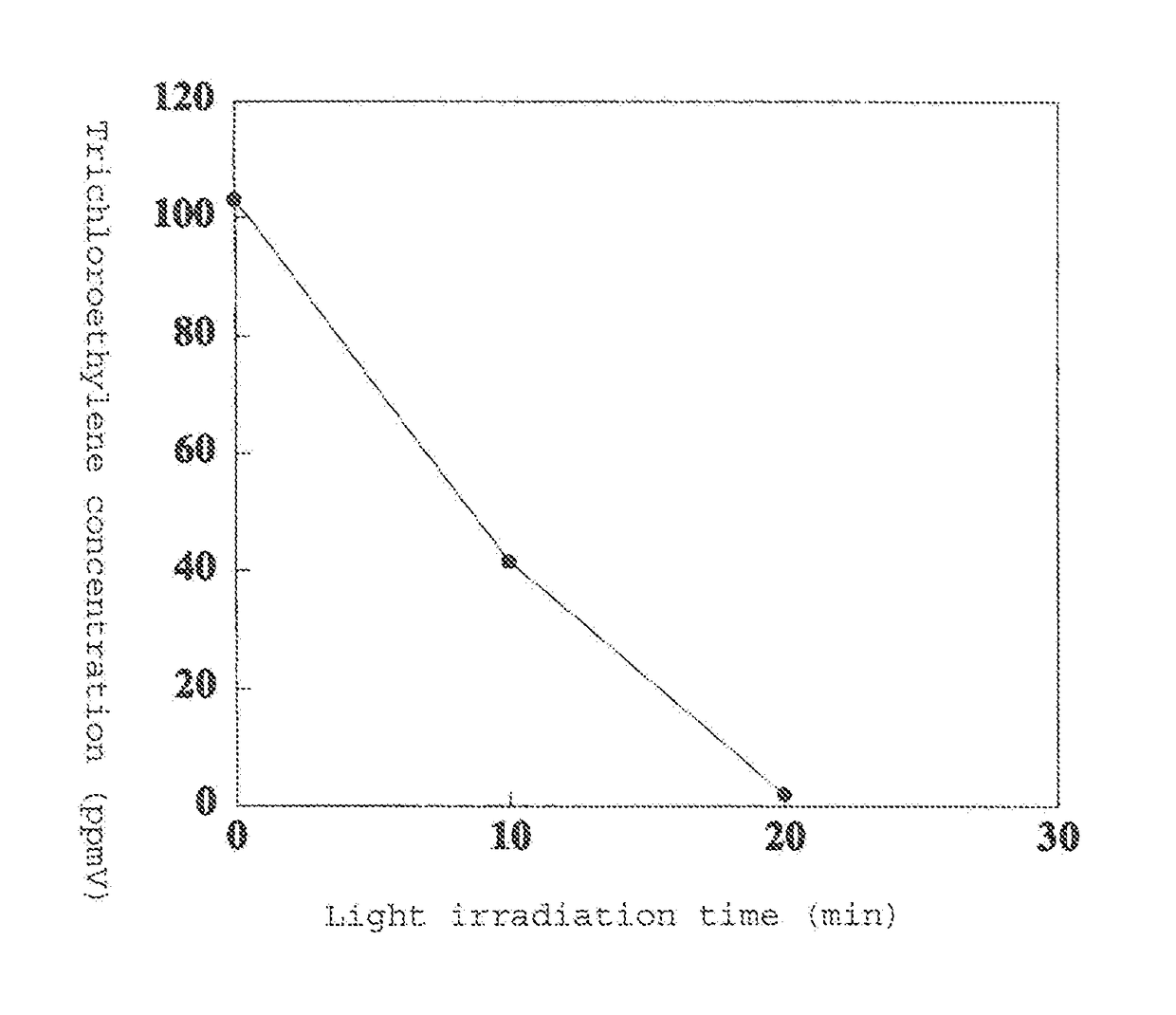Method for treating soil-contaminating water using photocatalytic material
a photocatalytic material and soil technology, applied in water/sewage treatment, physical/chemical process catalysts, separation processes, etc., can solve the problems of adsorption treatment with activated carbon, serious soil contamination, and adsorption capacity soon to reach saturation, and achieve significant efficient and rapid removal. , the effect of high activity
- Summary
- Abstract
- Description
- Claims
- Application Information
AI Technical Summary
Benefits of technology
Problems solved by technology
Method used
Image
Examples
example 1
[0117]Titanium metal was maintained in a nitrogen gas atmosphere at 950° C. for 3 hours to form titanium nitride on the surface of the titanium metal. The titanium metal with titanium nitride thereon was anodized for 30 minutes at a current density of 4 A / dm2 using an electrolyte solution of 1.5 M sulfuric acid, 0.1 M phosphoric acid, and 0.3 M hydrogen peroxide, thereby obtaining a photocatalytic material.
[0118]Using 50 mm squares of the photocatalytic material, 100 ml of 100 ppmV trichloroethylene gas was introduced into a glass container and subjected to light irradiation using fluorescent light (black light: Toshiba Lighting & Technology Corporation) that emits near-ultraviolet of 400 nm or less from the above with the light intensity being adjusted to 1.1 mW / cm2.
[0119]FIG. 1 shows the results of measuring the trichloroethylene concentration over time.
[0120]It was found that when using a photocatalytic material comprising titanium metal and a large amount of anatase titanium oxi...
example 2
[0121]Titanium metal was maintained in a nitrogen gas atmosphere, at 950° C. for 1 hour to form titanium nitride on the surface of the titanium metal. The titanium metal with titanium nitride thereon, was anodized for 30 minutes at a current density of 4 A / dm2 using an electrolyte solution of 1.5 M sulfuric acid, 0.1 M phosphoric acid, and 0.3 M hydrogen peroxide, thereby obtaining a photocatalytic material (total surface area: 52 m2).
[0122]The contaminated groundwater (soil-contaminated water) was pumped and aerated (subjected to a gas-liquid separation) to obtain a gas phase containing trichloroethylene.
[0123]A photocatalytic device comprising the photocatalytic material and thirty-two UV lamps with an output of 40 W was aerated with trichloroethylene gas obtained from the soil-contaminated water and subjected to light irradiation using fluorescent light that emits ultraviolet (254 nm).
[0124]The concentrations of trichloroethylene at the inlet and outlet of the device were measure...
PUM
| Property | Measurement | Unit |
|---|---|---|
| thickness | aaaaa | aaaaa |
| temperature | aaaaa | aaaaa |
| current density | aaaaa | aaaaa |
Abstract
Description
Claims
Application Information
 Login to View More
Login to View More - R&D
- Intellectual Property
- Life Sciences
- Materials
- Tech Scout
- Unparalleled Data Quality
- Higher Quality Content
- 60% Fewer Hallucinations
Browse by: Latest US Patents, China's latest patents, Technical Efficacy Thesaurus, Application Domain, Technology Topic, Popular Technical Reports.
© 2025 PatSnap. All rights reserved.Legal|Privacy policy|Modern Slavery Act Transparency Statement|Sitemap|About US| Contact US: help@patsnap.com


